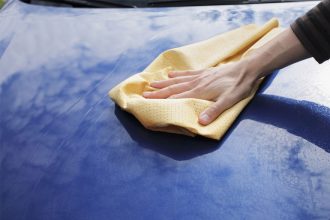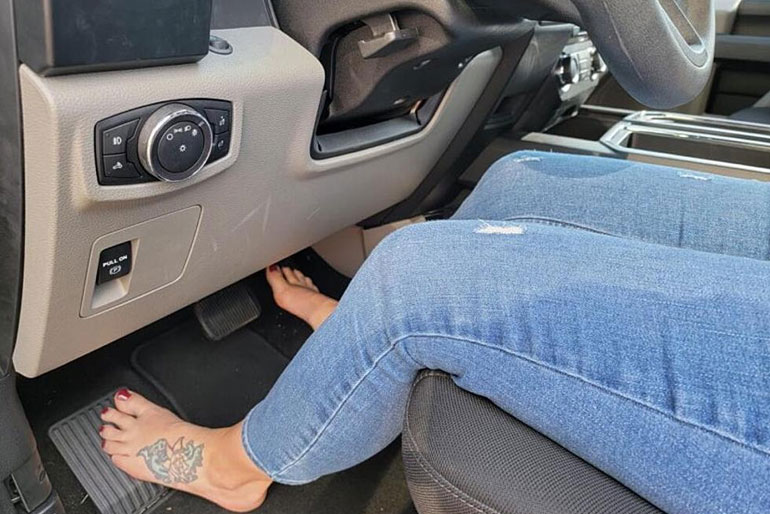For many people, driving is an extremely common occurrence: to get to work, hang out with friends, get groceries, etc. It has become an everyday thing to drive to where you need to go to the point where a car might become a person’s safe space or relaxing area, outside of where they need to be. Due to this, some people may treat being in their cars the same way they are at home, causing some people to drive barefoot. While it may seem like a comfortable and relaxed choice, driving barefoot can present several risks and hazards.
The Importance Of Proper Footwear For Driving
Having suitable shoes while driving is important for keeping proper control over your vehicle. Shoes have grip and support which allow the driver to have a secure connection with the gas pedals, allowing smooth driving maneuvers.
Potential Hazards Of Driving Barefoot
Driving barefoot can pose various hazards that may compromise driving safety. Lack of proper footwear can lead to a loss of traction on the pedals, making it difficult to apply brakes or accelerate swiftly, especially during emergencies.
Impact On Pedal Operation And Braking
Reduced Sensitivity And Control
Driving barefoot can lessen the driver’s sensitivity to the pedals. The absence of shoes may make it challenging to gauge the appropriate amount of pressure required for braking or accelerating, potentially leading to erratic driving behavior.
Increased Risk Of Slippage
Bare feet can become sweaty, especially in warm weather conditions, which can lead to slippage on the pedals. Such incidents can result in delayed response times or unintended movements, endangering the driver and others on the road.
Delayed Reaction Times
In an emergency situation, a split-second decision can mean the difference between avoiding a collision and getting into a car accident. However, driving barefoot may cause delayed reaction times, slowing down the driver’s ability to respond quickly to potential hazards.
The reduced control and sensitivity associated with driving barefoot can hinder a driver’s ability to take evasive action to avoid accidents. Proper footwear can provide the necessary grip and support to execute immediate maneuvers when faced with unexpected situations.
Barefoot Driving And Vehicle Safety
Adopting the practice of wearing appropriate footwear while driving should be considered a safety precaution. Drivers should have the necessary control and sensitivity to operate their vehicles safely. Insurance companies are becoming increasingly aware of the potential risks associated with driving barefoot. Some policies mention the use of proper footwear, and driving barefoot could potentially impact insurance claims.
Myths And Misconceptions
Myth: Barefoot Driving Provides Better Control
Some people believe that driving barefoot offers better control over the pedals. However, this is a misconception, as proper footwear provides enhanced grip and stability.
Myth: Barefoot Driving Is More Comfortable
Another common belief is that driving barefoot is more comfortable, especially during long journeys. While it may feel liberating, it can compromise safety, making it essential to prioritize safety over comfort.
Addressing Cultural Practices And Norms
In certain cultures, driving barefoot is considered normal and even preferable. Understanding the cultural context is essential in promoting safe driving practices while being sensitive to cultural norms.
Promoting Safe Driving Habits
Promoting safe driving habits, including wearing appropriate footwear, can be achieved through education and awareness campaigns. Encouraging open discussions about the risks of barefoot driving can lead to behavioral changes.
Tips For Safe Driving Footwear
- Choosing Appropriate Footwear: When selecting footwear for driving, drivers should opt for shoes with thin soles and a firm grip. High heels, flip-flops, and shoes with thick soles should be avoided, as they can hinder pedal operation.
- Keeping Spare Shoes in the Car: Having spare driving shoes in the car can be a practical solution for those who prefer driving barefoot. This ensures that drivers have suitable footwear readily available, enhancing safety without sacrificing comfort.
Educating Drivers About Risks
Driver education programs should address the risks associated with driving barefoot. Integrating this topic into the curriculum can help raise awareness among new drivers. Public awareness campaigns can play a significant role in educating drivers of all ages about the dangers of driving barefoot. These campaigns should highlight the importance of safe driving practices and proper footwear.
Driving barefoot may seem like a relaxed choice, but it comes with its share of risks and hazards. From reduced control over the pedals to delayed reaction times, driving barefoot can compromise safety on the road. Emphasizing the significance of proper footwear and educating drivers about the risks can lead to a safer driving experience for everyone.







